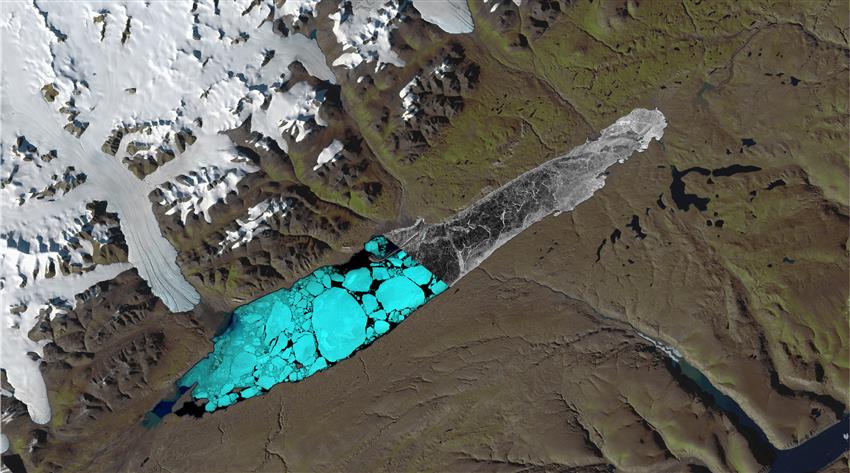Seasons at the Top of the World
Often the first image you may picture when someone mentions the Arctic is a landscape covered in ice and snow year-round. However, the Arctic is a place of abundant wildlife ranging from muskox and Arctic hares to polar bears and Arctic tern as well as vegetation such as purple saxifrage and High Arctic daisy.
These species can be found in even the most northern locations such as in Quttinirpaaq National Park on Ellesmere Island. Within the boundaries of the national park lies Lake Hazen, the world's largest High Arctic lake by volume. The landscape and lake create a unique thermal oasis at the top of the world where temperatures can reach up to 20 °C in the summer.
About the visual art
- Location: Quttinirpaaq National Park of Canada, Nunavut
- Company: H2O Geomatics
The combination of Landsat 8 and Sentinel-1 images shows the different seasons of Lake Hazen. The green tint of the surrounding landscape highlights areas of vegetation that surround the smaller lakes and follow the different channels carved into the landscape. A Landsat 8 image covers the southern portion of the lake showing a unique pattern in the disappearance of the winter ice cover as temperatures rise in the spring. The light blue ice is contrasted with the darker water being revealed.
In the northern end of the lake, a Sentinel-1 image reveals the winter ice cover, brighter portions of the image highlight cracks and ridges in the ice. Sentinel-1 can provide these unique views of the ice cover during periods of polar darkness because it is a radar imaging satellite and does not require sunlight to capture images. The combination of these various satellite images provides us with unique insight into the different seasons present at the top of the world.
